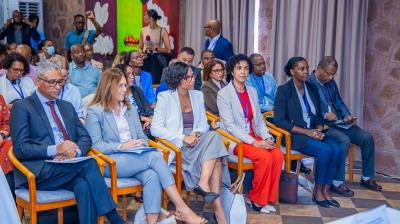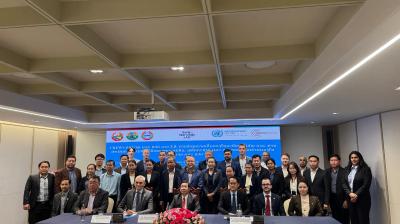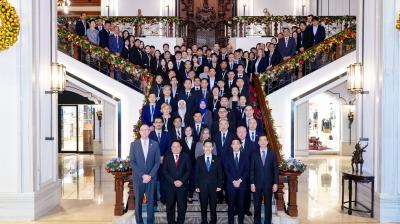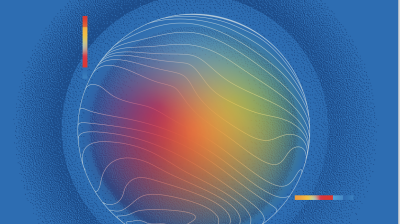Hydromet Gap Report calls for collaboration to ensure Early Warnings for All
The Hydromet Gap Report shows that hydrometeorological services offer an under-recognized and cost-effective opportunity to turn international commitments under the Sustainable Development Goals (SDGs) into actions that will accelerate their delivery.
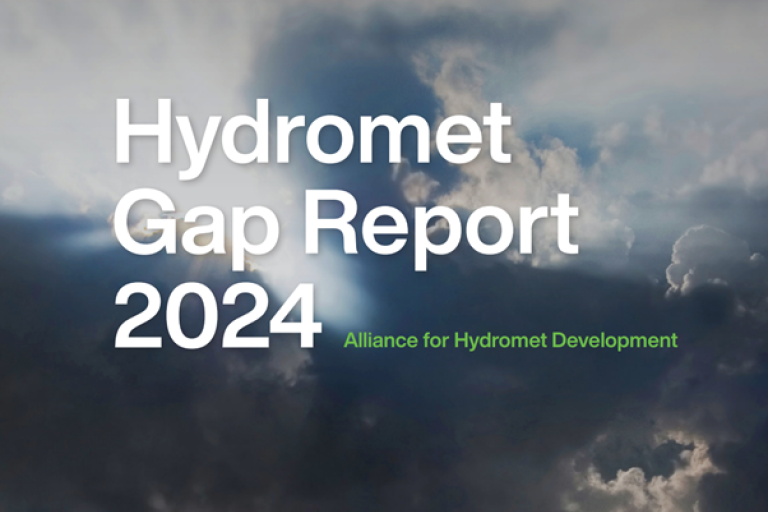
The Hydromet Gap Report 2024, published on 18 June, presents analysis based on Country Hydromet Diagnostics (CHD) conducted in 20 Least Developed Countries (LDCs) and Small Island Developing States (SIDS). It sheds light on the weakest links in the hydrometeorological value chain, which require urgent attention from governments and development partners. CHDs are part of the Systematic Observations Financing Facility’s (SOFF) support to countries. They are conducted, with SOFF funding, by advanced national meteorological offices who serve as peer advisors. The Hydromet Gap Report is issued by the Alliance for Hydromet Development of which WMO is a founding member. The Hydromet Gap Report was launched during the eighth SOFF Steering Committee meeting in Reykjavík, Iceland.
LDCs and SIDSs are experiencing devastating impacts from more frequent and intense weather, climate and water-related extreme events. Already 60 countries have collaborated through SOFF with the Alliance for Hydromet Development to identify gaps in their operations and enabling environment. The results of the first 20 countries are captured in the report. National Meteorological and Hydrological Services (NMHSs) provide essential services that are a basis for effective climate adaptation and resilience action and which play a foundational role for economic prosperity and resilient development; however, many countries face substantial challenges in delivering such services.
The Hydromet Gap Report shows that hydrometeorological services offer an under-recognized and cost-effective opportunity to turn international commitments under the Sustainable Development Goals (SDGs) into actions that will accelerate their delivery. The ability to predict and prepare for changes in weather and climate allows societies to improve resilience and economic prosperity. Improved forecasts of extreme events, accompanied by the effective dissemination of information and appropriate response measures, can save lives and substantially reduce economic losses, both goals of the Early Warnings for All initiative.
The Hydromet Gap Report identifies deficiencies that prevent the effective provision of high-quality weather, climate, hydrological and related environmental services:
- Weak observational infrastructure – All of the 20 assessed NMHS had gaps in their observation networks – due to inoperable stations, difficulties in maintenance, particularly of automatic weather stations – and frequent data quality issues.
- Not collecting and sharing enough basic weather and climate data – The general trend is positive, but there are still large data gaps (GBON compliance), especially over Africa and the Pacific islands. Lack of training, technical resources and Internet connectivity limit services quality and development. SOFF as a United Nations specialized climate fund has been created to tackle this issue.
- Low data quality, availability and sharing – Data transmission represents a significant challenge. The majority of the 20 NMHS assessed do not have a centralized automated data management system. Behind this gap stands a general lack of enabling information and communication technologies infrastructure.
- Under-resourced and under-staffed NMHS – The lack of qualified personnel, as well as financial resources, exacerbate the gap.
- Inadequate Early Warning Systems and no impact-based forecasting – None of the NMHSs had fully implemented impact-based forecasting. They also lacked standard alerting procedures, 24/7 alert services were not available nor were integrated Multi-Hazard Early Warning Systems (MHEWSs). Impact-based forecasting provides the information needed to act before disasters to minimize socioeconomic costs.
Support to close these gaps is crucial to improve Early Warning Systems towards achieving Early Warnings for All by 2027. The Gap Report identified the need for coordinated support from both government and development partners in several areas:
- To implement sustainable, context-responsive and cost-effective solutions, processes and frameworks, including closing the information and communication technology gap
- To promote the promulgation of appropriate legislation and build governance mechanisms for hydrometeorological and other MHEWS-relevant services
- To foster close cross-sectoral and regional relationships among national stakeholders and service users
- To build in-house expertise to produce tailored services, including through in-situ trainings
- To support regional technical cooperation frameworks.
In response to these findings and policy recommendations, the Alliance for Hydromet Development has outlined a set of priority actions, including the expansion of SOFF to other parts of the hydrometeorological value chain in support of the Early Warnings for All initiative.
Participating countries: Hydromet Gap Report launch: collaboration needed to ensure Early Warnings for All – Systematic Observations Financing Facility (un-soff.org)



